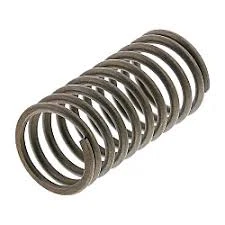
- Mobile Phone
- +8613931874955
- sales@cntcmetal.com
types of compression spring
Types of Compression Springs
Compression springs are one of the most commonly used types of springs in various applications, ranging from consumer products to industrial machinery. They are designed to store mechanical energy when compressed and return to their original shape when the force is removed. Understanding different types of compression springs is crucial for engineers and designers as they select the right spring for their specific application. Here, we will explore the various types of compression springs and their distinct characteristics.
1. Cylindrical Compression Springs
Cylindrical compression springs are the most prevalent type and are characterized by their cylindrical shape. They are made from a wire wound in a helical coiled form which compresses along the axis of the coil. These springs can be further categorized into open-coil and closed-coil designs. Open-coil springs have spaced coils that allow for greater flexing and are typically used in applications where space allows for expansion. Closed-coil springs have coils that are tightly wound together, enabling them to provide higher resistance to compression, making them ideal for more compact spaces.
2. Conical Springs
Conical compression springs, often referred to as tapered or hourglass springs, are designed with a larger diameter at one end and a smaller diameter at the other. This unique shape allows for a variable spring rate which can be advantageous in applications requiring a soft initial load followed by a stiffer load as the spring is compressed further. Conical springs are particularly beneficial in automotive applications, where they can help manage the varied load during operation.
types of compression spring

Biconical springs are similar to conical springs but feature a symmetrical design with both ends tapering towards the center. They are used in applications requiring balanced load distribution and offer unique mechanical characteristics, often resulting in a softer initial resistance similar to conical springs. These springs are commonly utilized in scenarios where space is a constraint but elasticity is still vital.
4. Die Springs
Die springs are specifically designed for high-load applications, typically found in die machinery involved in stamping operations. They are made from high-strength materials and are able to withstand significant force without permanent deformation. Die springs often feature a larger wire diameter compared to standard compression springs, increasing their durability and load capacity. Additionally, they may have a color-coded system to indicate their load capacities, providing a quick reference for selection.
5. Extension Springs
Although primarily considered for tension applications, extension springs can also function as compression springs in specific scenarios where the load pulls towards or compresses the spring. Understanding the load requirements and conditions in which a spring operates is essential for proper selection, especially when working with materials and dimensions.
Conclusion
Compression springs are vital components across a wide variety of industries, serving tasks ranging from simple household applications to complex industrial machinery. Selecting the appropriate type of compression spring depends on multiple factors, including the required load capacity, space limitations, and the specific functional parameters of the application. By understanding the different types of compression springs—cylindrical, conical, biconical, die springs, and others—designers can make informed decisions, ensuring optimal performance and longevity in their applications.
share:
-
Yard Sign Stakes: Reliable Guardians of Outdoor SignsNewsAug.04,2025
-
Wall Ties: Invisible Guardians of Building StabilityNewsAug.04,2025
-
Resilient Web: The Super Guardian Power of Concrete MeshNewsAug.04,2025
-
Masonry Accessories: A versatile assistant on building foundationsNewsAug.04,2025
-
Iron Binding Wire: the 'invisible reinforcement specialist' in the fields of architecture and industryNewsAug.04,2025
-
Dynamic Spring: The diverse functions and excellent performance of Wire Tension SpringNewsAug.04,2025
-
Your Source for Concrete Wall Ties and Masonry AccessoriesNewsJul.10,2025



















